Last week I carried out an elektrical safety test on the HLK-PM01 to NEN 60101 (Dutch test for medical equipment) and it performed pretty well. I will try to post the file, after I removed some private information :-)
Furthermore I am building a automated load tester that relates variable loads to output voltages and surface temperatures, based on an Arduino Nano.
Bertb
Posts
-
Safe In-Wall AC to DC Transformers?? -
Safe In-Wall AC to DC Transformers??As you please ...
-
Safe In-Wall AC to DC Transformers??Short update ... yesterday I asked or Chinese friends from Alie to send a HLK module to our test friend.
I also did an insulation test with 1000 Volt. The test shows more than 1000 MOhm between ac and dc. So far so good. -
Safe In-Wall AC to DC Transformers??Sorry for the language thing. I will try to get some tests in English in the future.
The tester used is designed for tests of medical equipment and this specific test proves that this specific HLK was safe. The problem is, however, that it does not prove anything with respect to the safety of other HLK's.In the mean time, the same HLK is feeding a load of 730 mA. It's output voltage is 5.08 volts and the case temperature is Temp C: 46.81 Temp F: 116.26105.
@Didi. You are correct. I work in a hospital. I will try to setup the Fluke to English.
-
Safe In-Wall AC to DC Transformers??Wait Mike, there is more ...
I sacrificed a device to the altar of success and opened it.
That was not very difficult. After scratching away some gum stuff the following was revealed.
I will try to remove the rest of the gum with acetone. I will also do some heat and burn tests.This is quite funny to do :-)
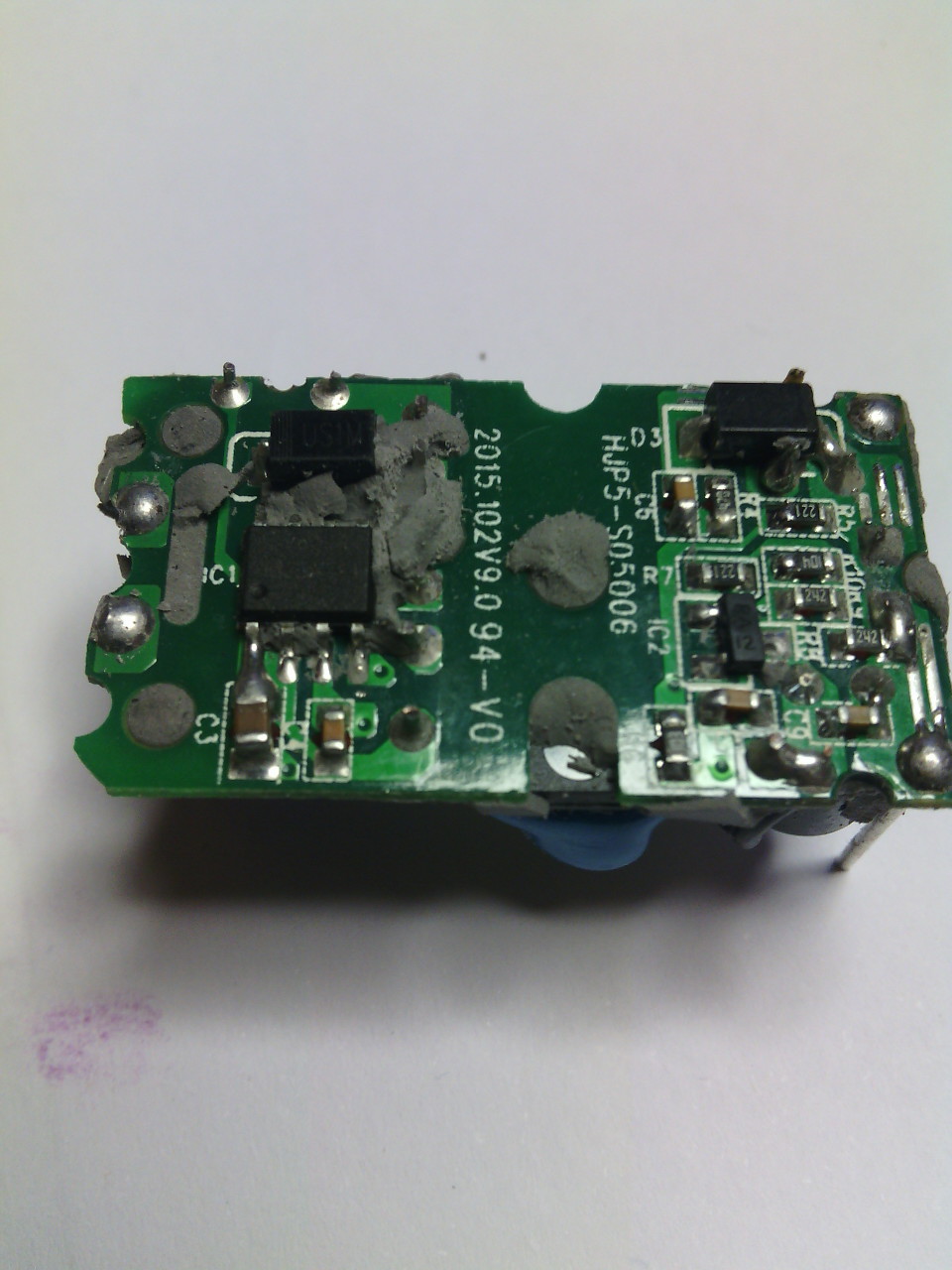
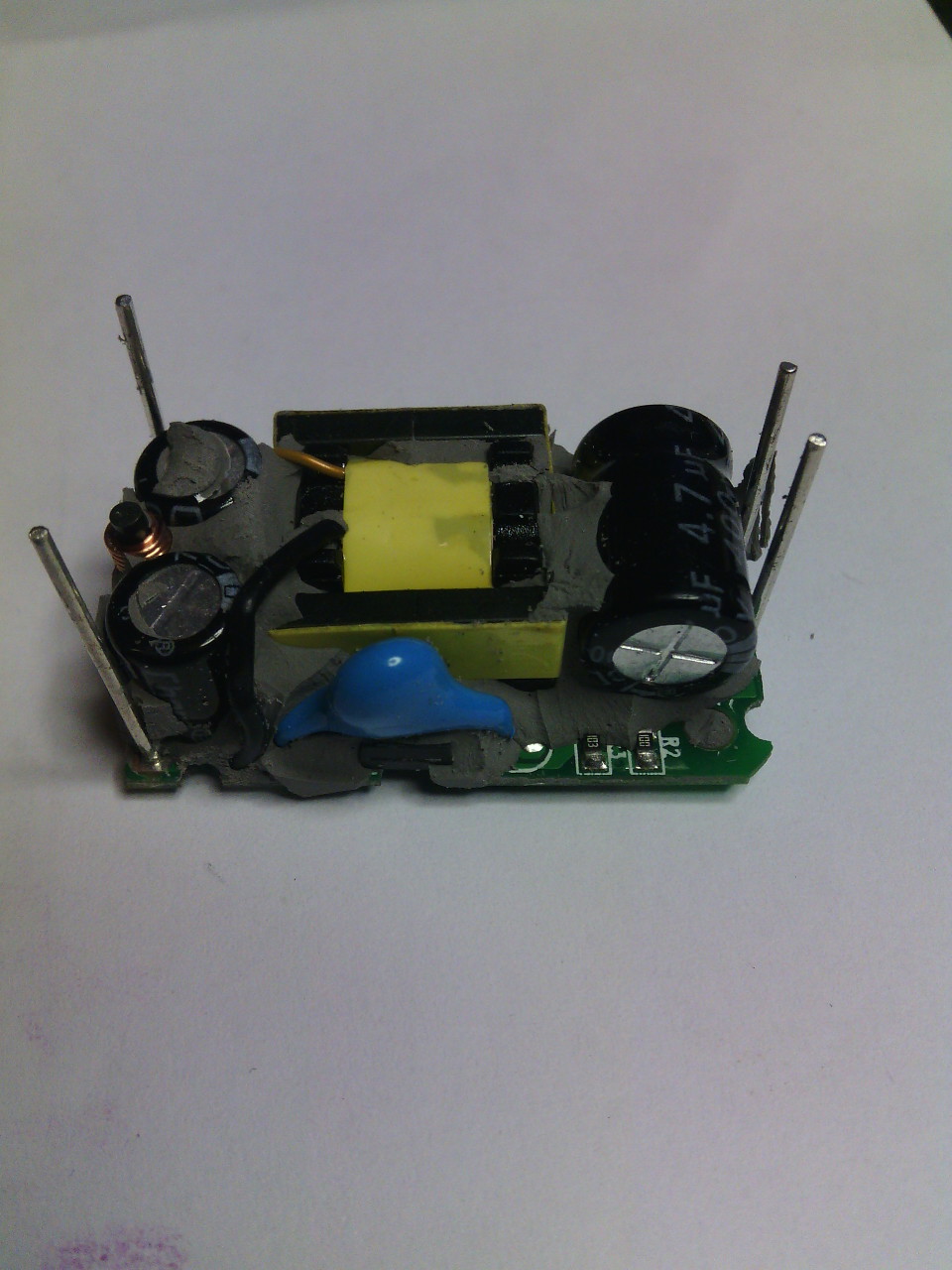
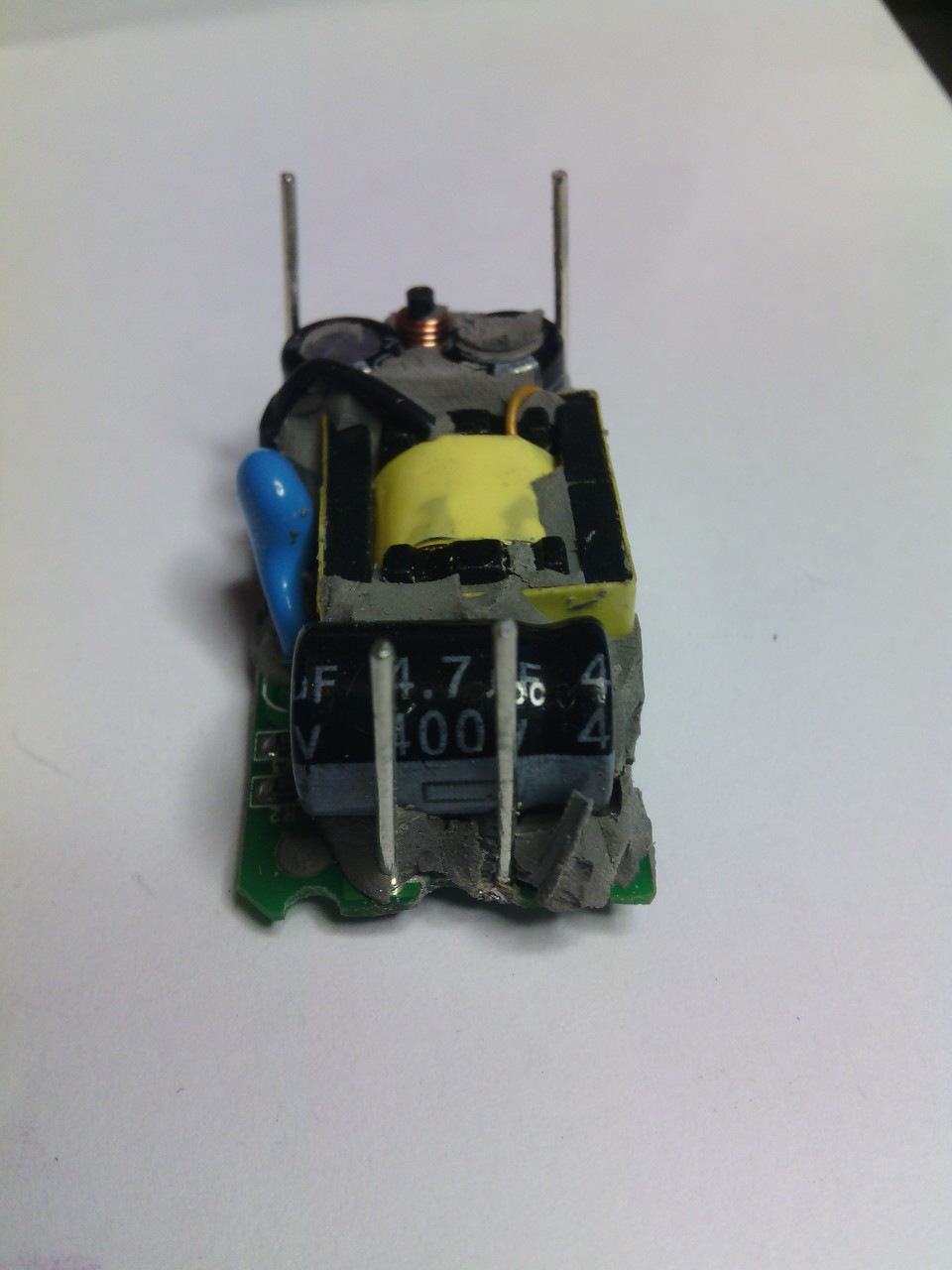
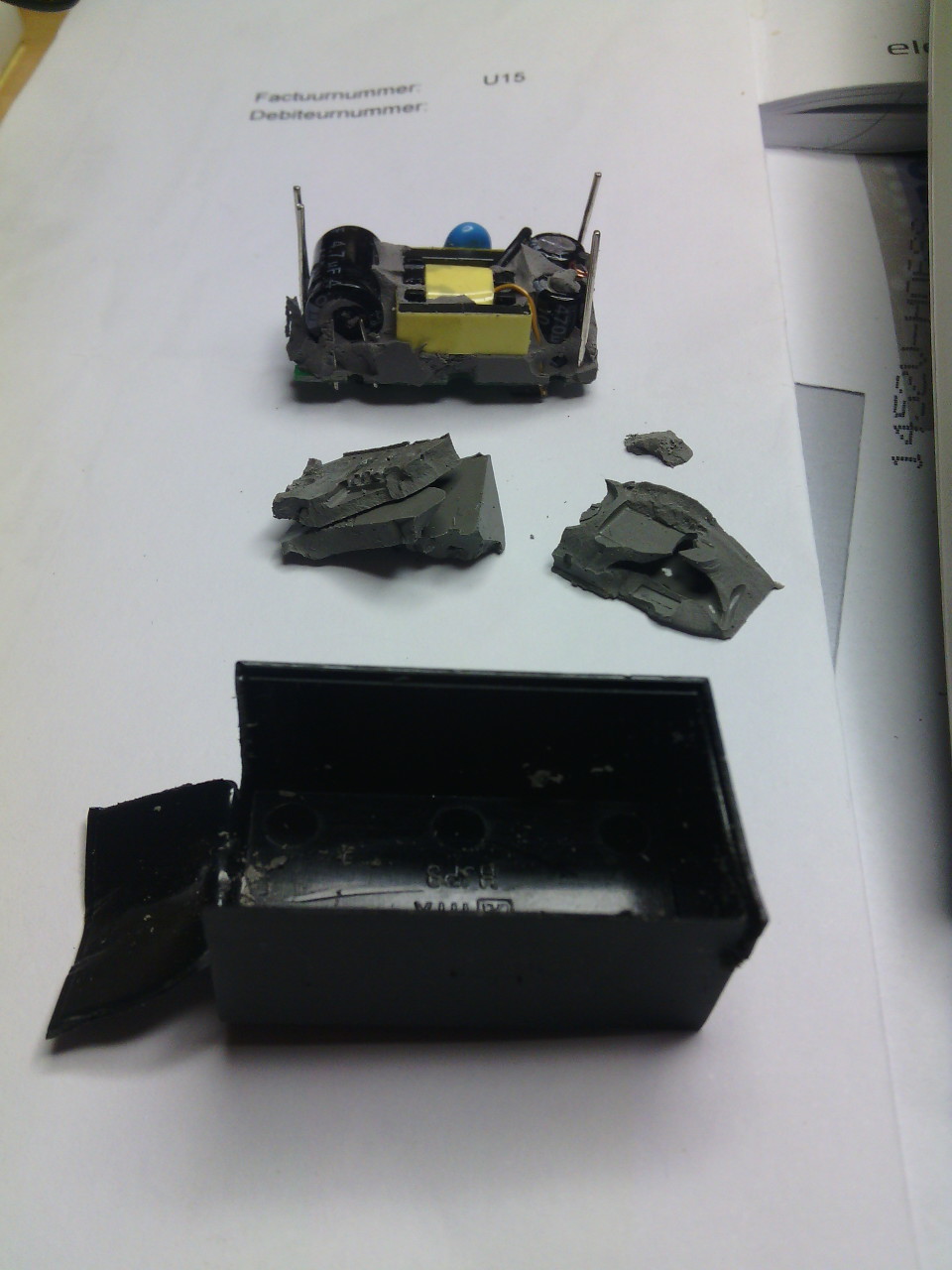
-
Safe In-Wall AC to DC Transformers??@Moshe. Yes they are. I did not yet dug into that, but is that good news?

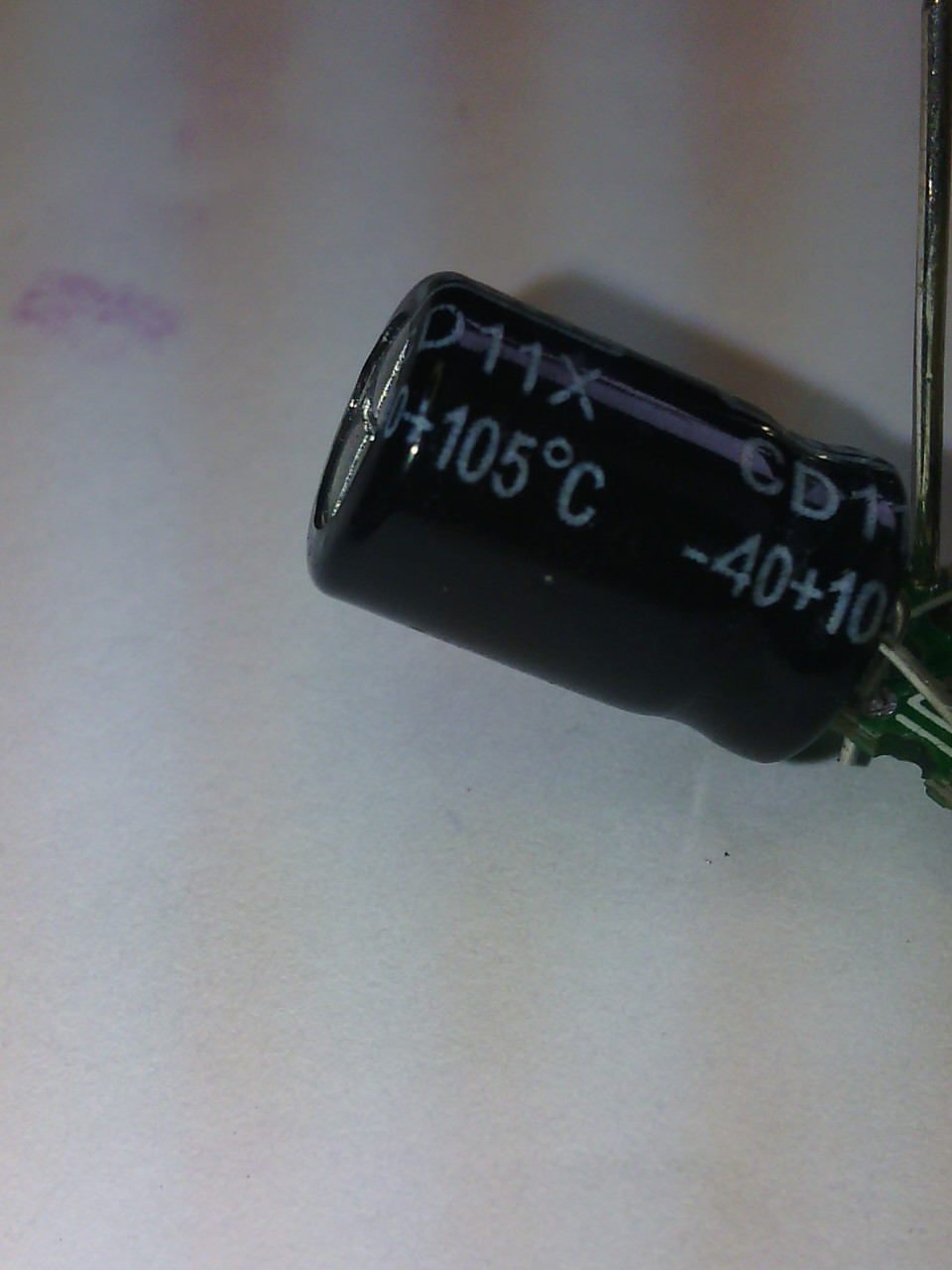
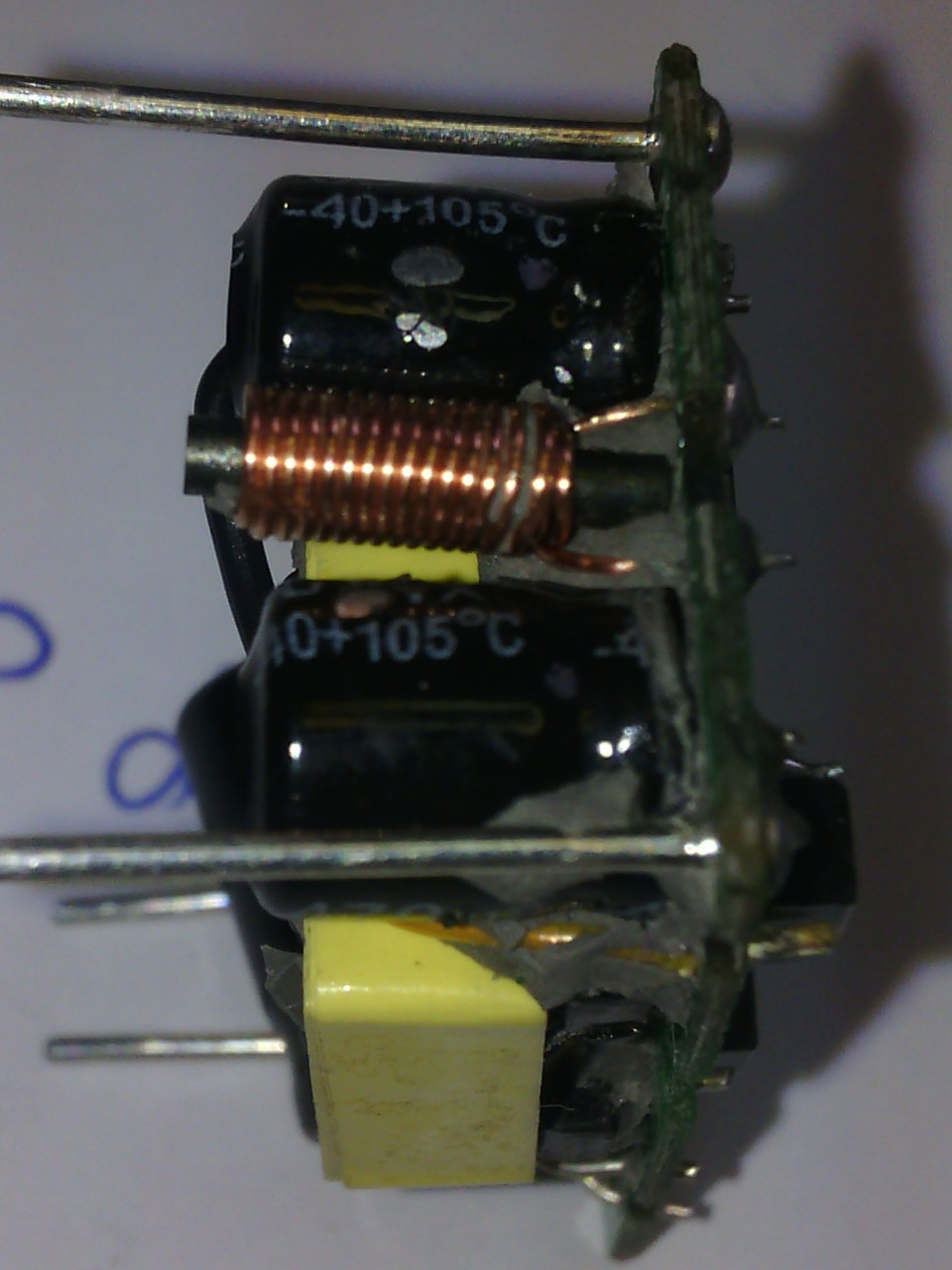
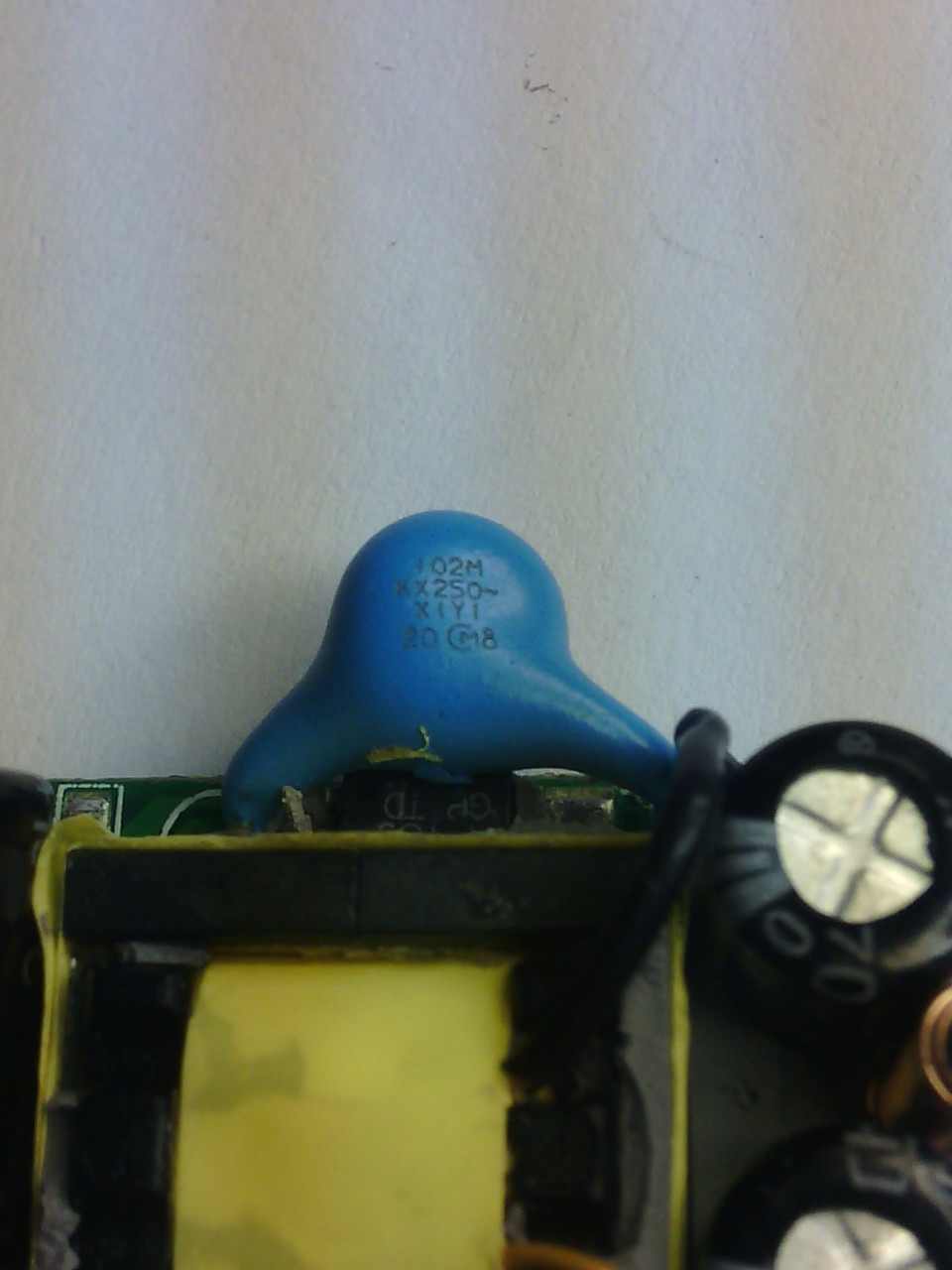
-
Safe In-Wall AC to DC Transformers??I do not totally agree with this. When I take a look at the example circuit and read the ovp text, I can only conclude that the output is protected, because the circuit seizes to work when VCC rises to high. Whatever happens to the input circuit, I don't know. Therefore I prefer a fuse and and a varistor.
Have a look at the tutorial link text
-
Safe In-Wall AC to DC Transformers??I did not finish the automated power tester, but I put an HLK with a DS18B20 temp sensor in a closed flush box(is that the English word for the box in the wall, used for domestic wiring?).
A simple resistor acts as a load and draws a 800 mA from the power supply. That is 33% more than the max continuous value. Voltage across the leads is 4.96. That is 5.08 without load. Not too bad. At 600 mA (100% load) the voltage is also 5.00.
The Dallas says that the surface temperature at the HLK is 48.19 c ( F: 118.74).
Also do not forget to mount adequate capacitors to reduce ripple.@petewill and @rvendrame ... Every country has directives regarding flammability. I cannot say which one is valid. I have seen some testing in the past. They put a burner under the device under test and waited to see what happened after removal of the source. In general (without any warranty whatsoever) when there are no flames or when they extinguish autonomic is good. If there is no hot material dripping from the DUT, that is also good. The test I carried out is described above. No dripping en self extinguishing. So I am satisfied.
Sorry, I cannot be more specific. I do not have the knowledge.@rvendrame: yes the fuse in series in the mains live wire en the varistor in parallel with the primary side of the HLK.
With respect to the varistor ... see the sheet below:
Take a value that is well above the normal AC tension of your mains power, but below the max input voltage of the HLK. so in Netherlands 250 volts will do. -
Safe In-Wall AC to DC Transformers??The specs of the unit states that it resilient to high voltages. I tested it with 250 VDC across input and output.
As stated before in this threat, the specs are ok, it only lacks the stamps.
From what I have seen so far, the module is good for me.From the specs:
4.Safety Characteristics:
4.1Products designed to meet UL, CE safety certification requirements.
4.2Safety and electromagnetic compatibility
Designed with the input of 0.5A UL certified insurance;
PCB board using double-sided copper clad plate production, material for the 94-V0 fire rating level;
Safety standards: Compliance with UL1012, EN60950, UL60950
Insulation voltage: I / P-O / P: 2500VAC
Insulation resistance :I / PO / P> 100M Ohms / 500VDC 25 ℃ 70% RH
Conduction and radiation :comply with EN55011, EN55022 (CISPR22)
Electrostatic discharge :IEC / EN 61000-4-2 level 4 8kV / 15kV
RF radiation Immunity: IEC / EN 61000-4-3 See Application Note
4.3 Temperature safety design
At room temperature,the capacitors of this power , the inner surface of the main converter maximum temperature does not exceed 90 ℃;
Shell maximum surface temperature does not exceed 60 ℃
